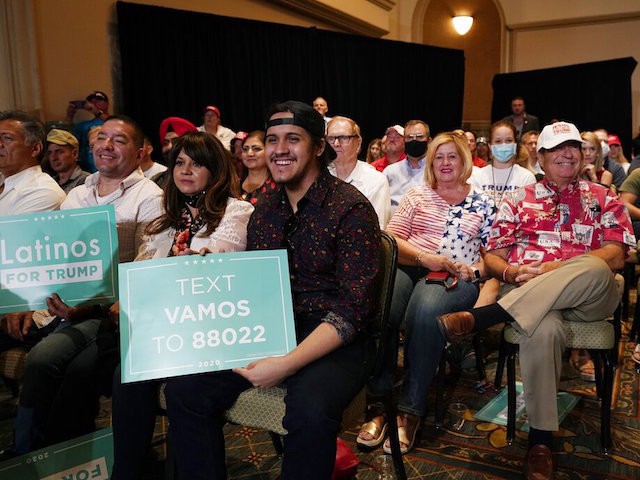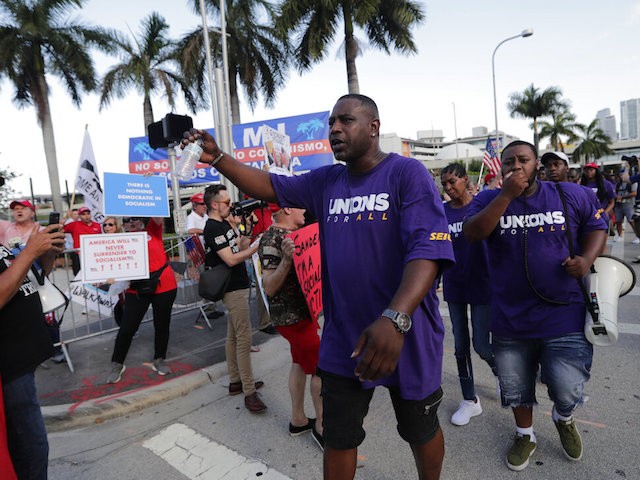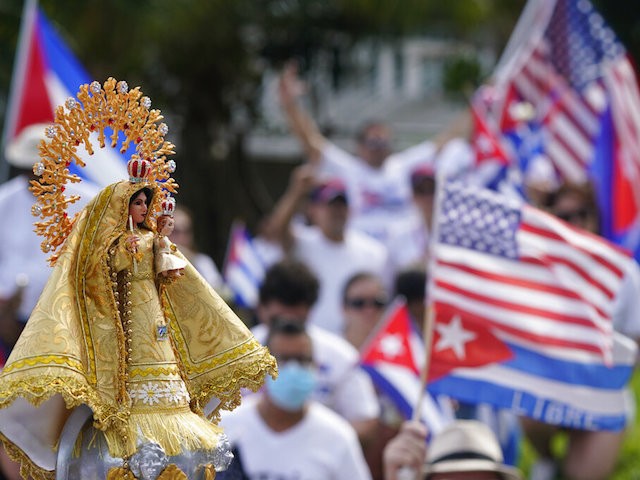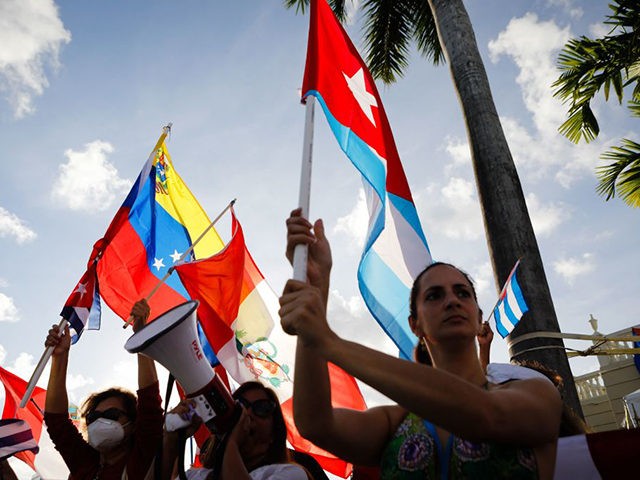Political observers and pollsters have appeared baffled in the past few years by the Hispanic community’s clear and growing affinity to conservative politics. For Hispanics who appreciate their own culture and unique place in American history, none of this is a surprise.
A Wall Street Journal poll published in December found that 44 percent of all Hispanic adults would vote Republican in Congressional elections, as compared to 41 percent for Democrats.
The same poll showed that if presidential elections were held today, 45 percent of Hispanic adults would vote for former President Donald Trump instead of incumbent Joe Biden. According to Catalist, a Democrat voter-data firm, “Trump’s share of the Latino vote grew by 8 percentage points compared to 2016, this meant that Biden carried the group by about 750,000 less than … Hillary Clinton, the Democratic nominee four years earlier.”
This growing conservative movement among Hispanic communities is an enigma for many analysts. The trend runs deeper than preference for Trump or even an option for specific parties. It has to do with the shared values of Hispanic communities, the profound issue of Hispanic identity in the United States, and foreign policy.

The crowd listens to President Donald Trump speak as he participates in a Latinos for Trump Coalition roundtable Monday, Sept. 14, 2020, in Phoenix, Arizona. (AP Photo/Ross D. Franklin)
“By 2050, it is estimated that 29 percent of the U.S. population will be of Hispanic origin, turning it into the nation’s largest minority. By 2060, it is believed that the Hispanic population will reach 111 million by 2060,” commented Dr. Rafael Carcamo, a Nicaraguan American physician who is a community leader in southern California, to me in a recent conversation. “There is a distinct and rich cultural tradition that has been passed on from generation to generation among Hispanics in North America, it is differentiated and unique, but very much a proud part of America.”
Although Hispanics are proud of their specific cultures and nationalities, they share a common language that links them both to a strong spiritual tradition and a legacy of great civilizations that merged into the same cultural root, with overlapping national memories. Understanding this requires a nuanced comprehension of Hispanic history and geography, and of the term “Hispanic” in and of itself.
Dominican-born and NYC-based political scientist Felipe Cuello, who is very active in the Republican Party, pointed in another conversation to language as a component of a natural Hispanic conservatism. Many Hispanics are bilingual. Spanish is a very logically structured language, regulated by an officially sanctioned international institution. Its composition is hierarchical and formal. The value of reverence for the old, and particularly for authority figures within the family, is built into the way Spanish is expressed, particularly in the Western Hemisphere.

A union crowd confronts anti-socialist Latino protesters outside a Democratic presidential debate Wednesday, June 26, 2019, in Miami. (AP Photo/Lynne Sladky)
Socialist language engineering, which Orwell famously referred to as “newspeak,” has a difficult time manipulating the internal rationale of Spanish. An example of this is the term “Latinx,” coined by activists for a specific ideological purpose but rejected in a widespread manner by Hispanics. Surveys indicate that only 2 to 3 percent use it. Many Hispanics have seen “Latinx” as a collectivist term that suppresses cultural diversity. Others see it as a “newspeak” construction imposed on Spanish. The word is not pronounceable in Spanish.
The preservation of the correct Spanish forms is often a symbol of resistance in those Hispanic countries dominated by communism. Although Hispanics in the United States most often use English, language forms taken from Spanish are often present.
“The presence of Spanish-thinking and -speaking peoples in the rise of North America, and in the founding and history of the United States, is an intrinsic part of history. Hispanics feel that they are part of America, and any truthful record of American history and culture shows that Hispanics have certainly made and continue to make their own contribution to it,” history professor and jurist Rene Bolio, who runs the Mexican Commission for Human Rights, tells me. Bolio, like many Hispanics, has family in Mexico and the United States, and travels often between both countries.
“Hispanics are the fastest growing population in the military and are active in law enforcement and public service throughout the country. This shows how Hispanics value their own traditions but also see them as part of what the United States is, of their own intense love for this country,” Carcamo observed.
“The arrival of the Spanish to an unknown continent and the process of interracial and intercultural mixing this generated led to the forging of blood ties, and to the emergence of a grand family, which is precisely what the left seeks to finish,” Maria Herrera Mellado, a Spanish-born attorney in South Florida who represents the Spanish political party Vox in that state, told me. “To speak about Hispanics entails speaking about the origins of what America stands for, it is about the values we conservatives struggle for on a daily basis.”

A small statue of Our Lady of Charity, the patron saint of Cuba, is held up as demonstrators gather to support protests in Cuba, Sunday, Nov. 14, 2021, in downtown Miami. (AP Photo/Wilfredo Lee)
Hispanics in the United States belong to extended families where different classes and skin colors co-exist through very powerful bonds of kinship. Two powerful influences have affected this: the social mobility of American culture and the inclusiveness of Christianity in its different denominations. Families are so large and racially diverse that they often constitute a microcosm of the world at large, but unified by a narrative of integration that has successfully prevailed through time.
Whereas Marxism works upon the concepts of “newness” and collectivism, where the “modern” is always superior to the past, Hispanic culture promotes veneration for the tried and tested – for tradition. The stories of departed family continue to enrich the inner conversations of kin groups, and group visits to shrines and cemeteries to remember a family saint or honor loved ones who have passed away are common for those who have the privilege. Those split from their past through exile – who cannot go back to those shrines – maintain oral tradition and religious practices that keep them in touch with their ancestors.
The result is a Hispanic generation currently coming of age in America with a strong sensibility about tyrannical regimes and human rights abuses. In October 2020, a huge “anti-Communist caravan” of approximately 30,000 cars in Miami attracted mostly young Hispanics born and raised in the United States. Participants did not arrive as part of age peer groups but, rather, as members of families. Flags of Colombia, Cuba, Nicaragua, Puerto Rico and Venezuela, and also of the LGBQT community and of Hong Kong and Taiwan, were visible throughout the event.

Caravan against socialism and communism in Miami, Florida, October 10, 2020. (Daniel Quiróz/Cuban Democratic Directorate)
The most numerous flags, however, were American. The caravan is perhaps a very strong showcase for how Hispanics in the United States view themselves: plural communities unified by a patriotic American identity and a common, centuries-old cultural heritage interwoven with the existential fabric of the United States.
These communities have proved barely penetrable for the socialist values that have become the calling card of the Democratic Party.
Dr. Orlando Gutierrez-Boronat is a writer, educator, and co-founder and spokesman for the Cuban Democratic Directorate (Directorio). Directorio was part of the Patriotic Committee organizing October 2020’s Anti-Communist Caravan in Miami.

COMMENTS
Please let us know if you're having issues with commenting.